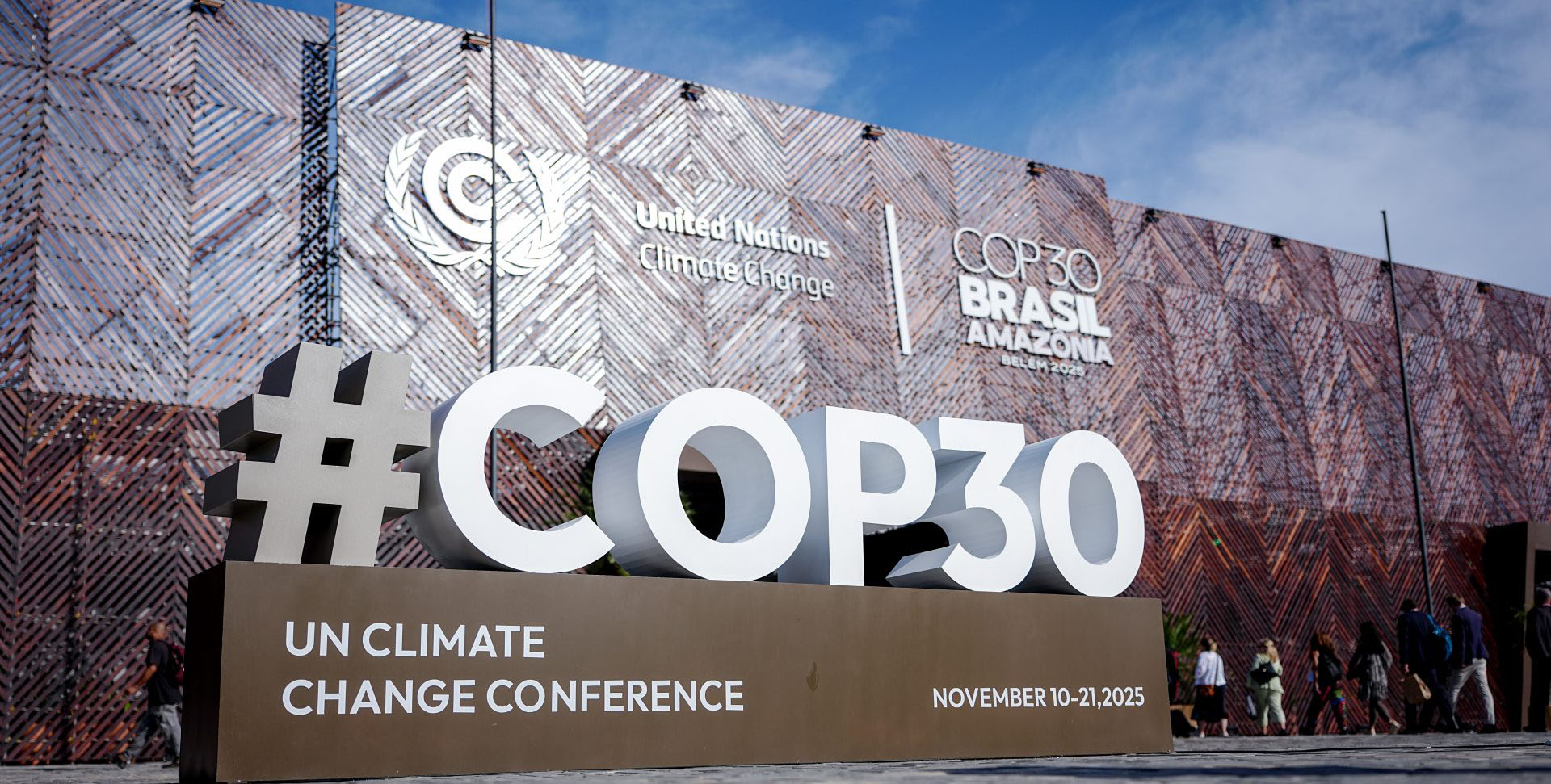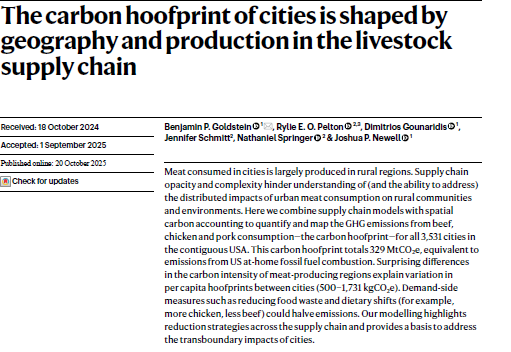🌿 COP 30 - Building a Greener Tomorrow
The 30th UN Climate Change Conference (COP 30) is taking place in Belém, Brazil. Stay informed about global climate actions, negotiations, and live sessions from 10 – 21 November 2025.
Get Updates
The carbon hoofprint of cities is shaped by geography and production in the livestock supply chain

Files
Date
October, 2025Author(s)
- Benjamin P. Goldstein , Rylie E. O. Pelton, Dimitrios Gounaridis , Jennifer Schmitt, Nathaniel Springer, Joshua P. Newell
Abstract
Meat consumed in cities is largely produced in rural regions. Supply chain opacity and complexity hinder understanding of (and the ability to address) the distributed impacts of urban meat consumption on rural communities and environments. Here we combine supply chain models with spatial carbon accounting to quantify and map the GHG emissions from beef, chicken and pork consumption—the carbon hoofprint—for all 3,531 cities in the contiguous USA. This carbon hoofprint totals 329 MtCO2e, equivalent to emissions from US at-home fossil fuel combustion. Surprising differences in the carbon intensity of meat-producing regions explain variation in per capita hoofprints between cities (500–1,731 kgCO2e). Demand-side measures such as reducing food waste and dietary shifts (for example, more chicken, less beef) could halve emissions. Our modelling highlights reduction strategies across the supply chain and provides a basis to address the transboundary impacts of cities.
Citation
Goldstein, B.P., Pelton, R.E.O., Gounaridis, D. et al. The carbon hoofprint of cities is shaped by geography and production in the livestock supply chain. Nat. Clim. Chang. 15, 1190–1197 (2025). https://doi.org/10.1038/s41558-025-02450-7
Publisher
Nature Climate Change
Rights Holder
Nature Climate Change
URI
https://knowledgehub.pksf.org.bd/collections/QkhQS2VsSURocXdmeW5laklLMjk1dz09
